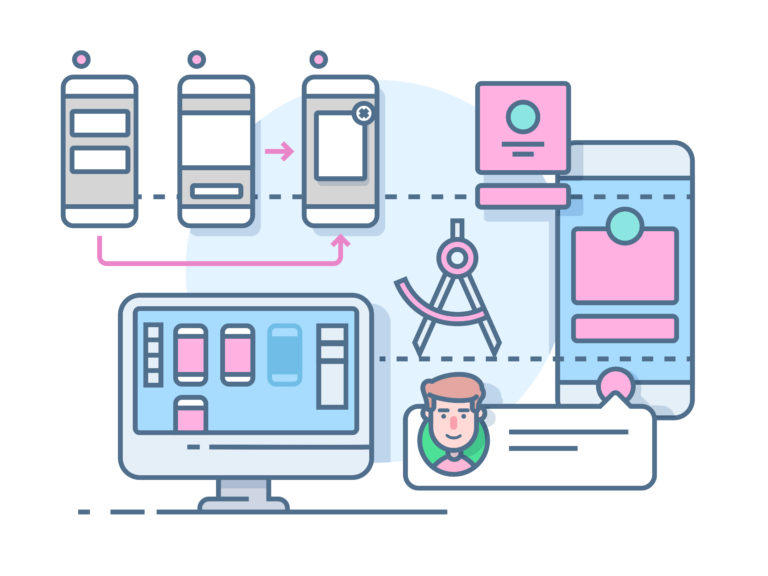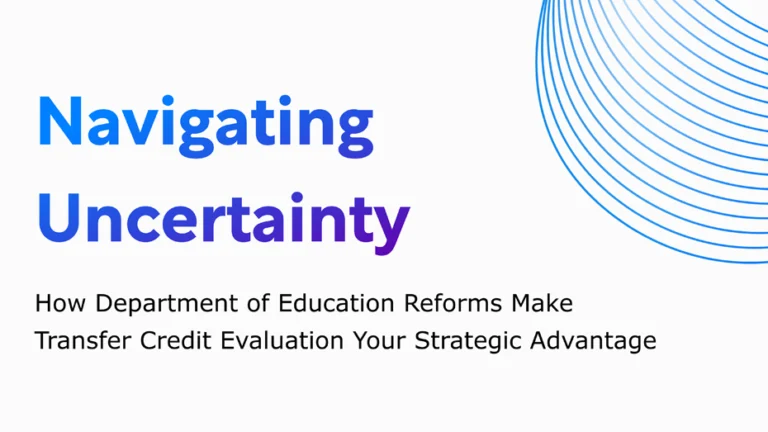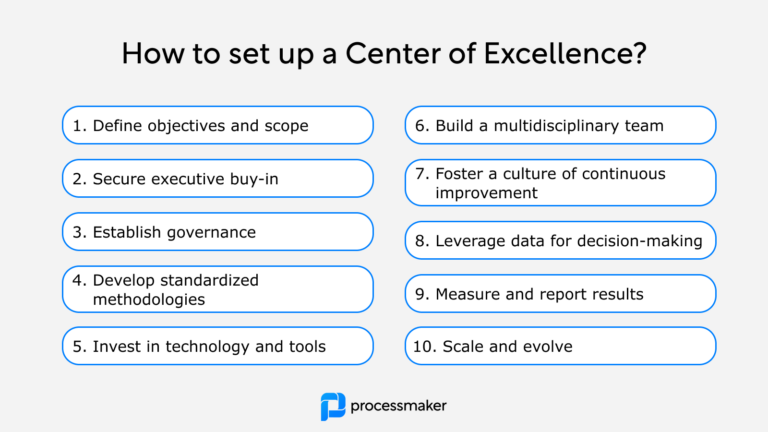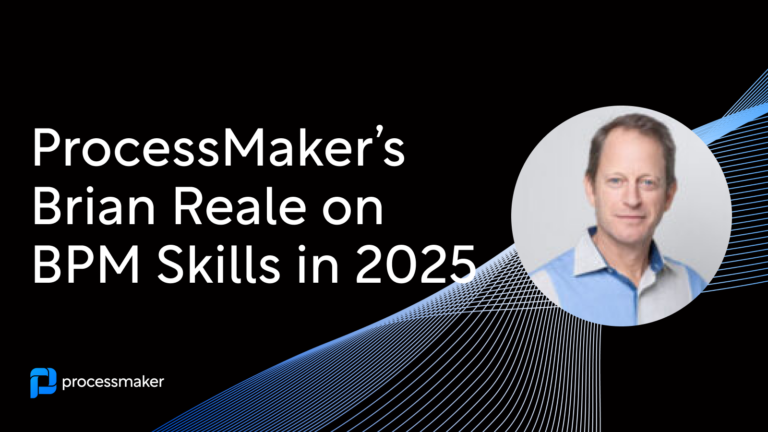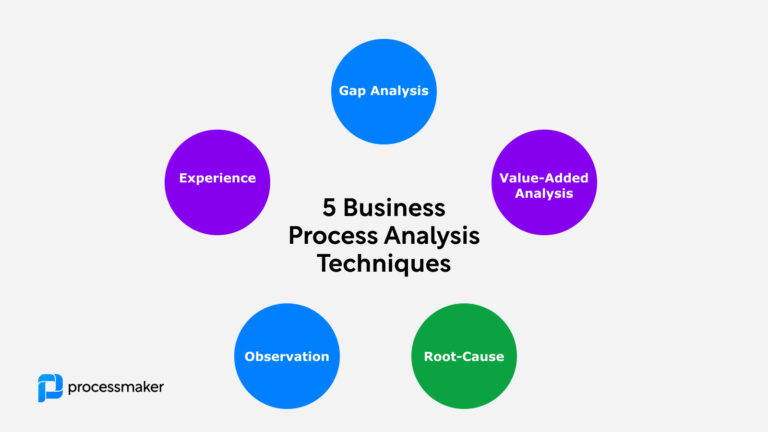Adding design thinking in business process management (BPM) results in a more profitable customer experience strategy.
Customer experience (CX) is now an integral part of any company’s revenue strategy. While BPM software focuses primarily on optimizing workflows resulting in a better employee experience, adding design thinking to BPM results in a better external, more customer-focused experience. Two seemingly different disciplines on the outside come together today to deliver a lucrative customer experience strategy, otherwise known as CX.
What is design thinking?
Design thinking is a creative method used by designers and innovators alike to solve complex problems and find desirable solutions for users. This way of thinking is solutions-based and action-oriented, a stark contrast from previous problem-focused philosophies.
One of the best real-world examples of design thinking is the rebuilding of Times Square. An area once avoided by locals and tourists alike due to high crowds, crime rate, and poorly designed landscape was approached by New York City as an opportunity for change. The Times Square problem was much more than just a developmental issue. The lack of design thinking in previous construction enabled the area to become a dangerous zone for pedestrian injuries.
The city teamed up with Norwegian architecture firm Snøhetta to revamp the area, altering the landscape from narrow, overcrowded roads into an open, pedestrian-friendly space. The firm had to first understand the pedestrian traffic patterns, population, and human behaviors before ideating on how to best maximize the space. The project was completed in a seven-year span, effectively reducing pedestrian injuries by 40% and overall crime by 20%.
In the case of business, design thinking to enhance business strategy was first popularized by design giant IDEO and later refined by process-driven businesses like Frog, Method, Proctor and Gamble, Coca-Cola, and Apple. As of June 2019, Forrester revealed that design thinking can deliver a quantifiable ROI of a staggering 85% increase. That’s not just for design-led organizations either. InVision published the largest industry-wide report done yet about the impact of design thinking in enterprise organizations, uncovering that among 70% of 2,200 participating companies have built better products through design (InVisionApp, 2019). The design puts experience first, much like BPM software, to build extraordinary experiences. The difference lies in scaling design thinking over an entire organization for better customer experience, not just internal workflow solutions.
Design thinking isn’t just a buzzword anymore. It’s the cornerstone of creating a powerful, profitable CX strategy for the enterprise company.
What is CX?
Maybe you have heard of UX, also known as user experience. On one hand, UX tends to focus on the experiences of a specific product or service. It’s more about how a user interacts with one part of a larger puzzle piece, typically for easy usability and seamless design.
On the other hand, its cousin, CX (or customer experience), is the experience of a customer across all channels of a product or service’s lifecycle. This includes perceptions of the brand, sales process, pricing, and even the product’s delivery.
How Design Fits Into BPM
Traditionally, BPM is a practice focused on improving, optimizing, and managing a company’s enterprise-level workflows from start-to-finish. The overall goal is to maximize efficiency, instilling a level of accountability and transparency in those processes.
Every workflow is deemed efficient by how well the process helps stakeholders organize, standardize, duplicate, and optimize information. The only way to be sure a workflow is seamless in design is by collecting and implementing user feedback. Whether the workflow is internal for employees, or external as a solution for a customer, workflow solutions are built by filling a human need. This is precisely the role of a designer: To understand human motives, behaviors, and needs.
Since UX research collects feedback from stakeholders about product experience, designers can then use this feedback to build a better product in a very customer-centric way. The only way to go about focusing on the customer is by leaning into empathy. As McKinsey director Hugo Sarrazin says, “If you dig deep and try to understand [empathy], there are insightful things you can discover about the product you’re trying to design or the service you’re trying to create.”
In the case of design in modern business intelligence, CX is under the spotlight. More and more businesses every day are asking how to improve the overall experience of their services or products’ lifecycle. Feedback is priceless; it’s about using this valuable feedback to test, test, and retest again and again to craft the perfect delivery.
This cyclical, creative process gives room for the trial-and-error failures necessary to build excellence across every touchpoint of a CX journey. Without constant failing, a company runs the risk of missing out on valuable data intended to make the next iteration more enjoyable, profitable, and functional for the next consumer.
Critical to crafting any user or customer experience is empathy, or a human’s ability to truly understand and relate to another human. Empathy is the prerequisite character trait to any great designer, one that makes design thinking particularly revolutionary in standard business strategy.
Prioritizing CX in BPM
Since CX has its roots in design principles, we can begin to explore the benefits of scaling customer experience strategy across organizations. While BPM focuses primarily on improving specific processes within a company between people, design disciplines like service design focus on innovating processes from the outside-in, or rather among people as a whole.
Essentially, service designers and consultants gather information about the way customers interact with each touchpoint of the customer journey to maximize first employee experience, and then customer experience. Service design, according to Nielsen Norman Group, is less about “designing a service” and more about “addressing how an organization gets something done.”
It’s easy to see how service design goes together with process design, a component in BPM as a practice.
Aside from being complementary, the ROI is real. Another study from Forrester reveals design cuts costs, mitigates risk, and ultimately raises profitability. This means that for every $1 invested in UX, businesses can expect $100 in return. One health and human services organization reduced its software product defects by over 50% through design and design thinking (Forrester). In the case of BPM software already aimed at providing streamlined solutions for customers, adding design thinking could improve product experience while slashing costs at the same time.
Knowing now that UX is a slice of CX, we can assume investing in the whole pie will yield even more positive returns. Because CX involves multiple internal and external stakeholders, the nature of customer experience calls for greater organization on the enterprise level than simply making a customer’s journey positive.
In order for a CX strategy to be effective, details in productivity, workflow mapping, and hierarchical organization on the process level need to be clear cut in the definition. This is because BPM prioritizes and aligns productivity with business strategy, and business strategy is not successful without profit generated from its customers.
Bottom line: BPM is a precedent for creating a CX strategy. Without clearly defined and successful BPM practices already established in a company, achieving great CX is not possible.
So, what does the future hold?
New technologies like machine learning, Natural Language Processing, and cloud-based solutions are making BPM software easier to automate and integrate on the enterprise level. As tech changes, so do customer behavior. Businesses will have to make a deliberate effort to keep up with generational needs and wants as societies change.
Luckily, there are tools available in the business intelligence sector that companies are taking advantage of already. The biggest weapon in the arsenal to combat the learning curve among all these tools? Data.
Data holds the key to uncovering insight into inefficiencies, a hallmark within the practice of BPM. As the BPM space grows over time, SaaS solutions-based companies need to make data the pinnacle influencer in cultivating a strong CX strategy. And according to the research, that’s not happening quite yet.
Published earlier this year, The New Design Frontier report reveals “only 12% of companies using design thinking drive forward business decisions based on data analytics.” These companies focus heavily on quantitative metrics, modeling, and theoretical design practices to influence CX strategy, not just qualitative research like surveys, interviews, and other traditional user feedback.
Thanks to artificial intelligence, conservative industries like education and finance are starting to see a rapid transformation. Education innovation gave birth to EdTech as the scholarship application process was automated; finance became FinTech, as banks begin to seek increased transparency and convenience outside traditional models.
The paradigm shift between moving away from operational and workflow streamlining to the new focus of service design and organizational health creates a unique competitive advantage over companies unwilling to bend.
Alberto Brea of DiMassimo Goldstein broke the Internet when he called out the businesses failing to innovate, all while highlighting the power of customer-focused business.

(Photo sourced from LinkedIn.)
What we witness here is contemporary Darwinism at its finest.
The world of BPM is changing, especially now that design is recognized as a catalyst for increasing profit. Formerly alienated disciplines like data analytics and design thinking coming together is the key to addressing the increasingly overwhelming demand for building extraordinary CX.
Without a proper plan of prioritizing the customer, businesses will ultimately fail. How are your preparing for the next wave of consumer-centric innovation?
About ProcessMaker:
ProcessMaker is an American international SaaS corporation headquartered in Raleigh-Durham, North Carolina. We provide total customer support, training, and professional services to larger enterprises requiring highly-customized workflow solutions with our Business Process Management (BPM) software. Our flagship Low-Code product is the preferred choice for our customers due to its deep customization ability with little programming knowledge needed, making Low-Code an easy-to-use solution among non-technical teams.
